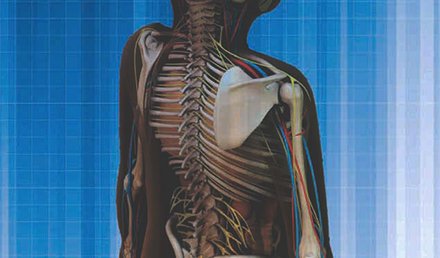There are some diagnoses that will be missed by nine out of 10 physicians; this is one of them. However, our goal is not to meet “Standard of Care” but to provide excellence in care: Take every patient at face value, without trying to guess their intentions for secondary gain. Ensure you are aware of the chief complaint stated to the staff in the urgent care center. Be an open book in your impression and …
Read More
Pitfalls in Assessing and Managing Common Pediatric Injuries
Urgent message: Fractures, in general, are relatively common among pediatric patients. Those most likely to be seen in the urgent care setting include injuries to the radius, ulna, humerus, lateral condyle, clavicle, tibia, and fibula. The second of two parts. Justin Kunes, MD, Shane R. Hanzlik, MD, Allison Gilmore, MD As noted in part 1 of this article (published in the February 2011 issue of JUCM and available at www.jucm.com), fractures are common injuries in …
Read MoreHealthcare Laws vs. Newton’s Laws
Lee A. Resnick, MD, FAAFP Newton’s Third Law: “To every action there is always an equal and opposite reaction.” Medicine applies Newton’s Third Law liberally, from physiology to pharmacology; negative feedback loops, down-regulation, compensatory states, and medication side effects all follow its principles. The body, as we well know, is inclined to homeostasis, and any upset to this balance is met with resistance and dysfunction. Unfortunately, well-meaning healthcare regulators, policymakers—and, yes, even fellow physicians—have ignored …
Read MoreAbstracts in Urgent Care: February, 2011
Most Frequently Missed Fractures in the Pediatric Emergency Department Key point: The most commonly missed fractures were pha- langes of the hand and metatarsal fractures. Citation: Mounts J, Clinenpeel J, McGuire E, et al. Most frequently missed fractures in the emergency department. Clin Pediatr (Phila). 2010 Dec 2. [Epub ahead of print.] This study quantified the types of extremity fractures most commonly missed on plain radiographs by pediatric emer- gency medicine specialists after an initial …
Read MoreClinical Challenge: February, 2011
The patient is a 10-year-old who presents after experiencing a blow to the right elbow, with resultant pain on extension of the arm. View the image taken (Figure 1) and consider what your diagnosis and next steps would be. Resolution of the case is described on the next page.
Read More
Hearing the Hoof Beats of Zebras! Facial Nerve Palsy: A Case Report
Urgent message: There is no diagnosis so “common” that it cannot be missed or mistaken for something else. A systematic approach to the history and examination are crucial to reaching the right conclusion and positive outcomes. Lee A. Resnick, MD Every now and then, medical school pearls are wrong. You remember: “When hearing hoof beats in Central Park, don’t go looking for zebras.” It may be true that zebras are infrequent visitors to New York …
Read More
Pitfalls in Assessing and Managing Common Pediatric Injuries
Urgent message: Fractures are common among pediatric patients. Familiarity with the growth process and the unique properties of the immature skeleton—as well as immediate identification of conditions requiring emergent referral—are necessary for appropriate care and avoidance of long-term sequelae. The first of two parts. Justin Kunes, MD, Shane R. Hanzlik, MD, Allison Gilmore, MD Injuries that ultimately prove to be fractures are a common cause of visits to the emergency room and urgent care among …
Read MoreA Crisis in Quality? Lessons from History
Lee A. Resnick, MD, FAAFP If history repeats itself, then we just may be in big trouble. Many of us remember the doc-in-the-box days of the early 80s, when the first urgent care boom occurred. There was a wild proliferation of urgent care centers, driven mostly by physician entrepreneurs looking to make a quick buck. By 1985, in excess of 3,000 centers dotted the country. The following decade brought significant contraction within the industry, before …
Read More
Assessing for Life-threatening Chest Pain in the Urgent Care Center
Urgent message: Data show that urgent care centers are becoming a more common destination for patients experiencing chest pain. Immediate recognition of emergent vs. urgent causes may be the make-or-break moment for the patient’s outcome. Jasmeet Singh Bhogal, MD Introduction Evaluation of chest pain always presents as a diagnostic challenge, be it in the outpatient family medicine setting or the hospital emergency department. In fact, urgent care centers occupy a unique position in the equation; …
Read MoreClinical Challenge: January, 2011
The patient is a 64-year-old man who presents with pain in his left shoulder after experiencing a fall in which the shoulder took the brunt of the blow. He is otherwise healthy. View the image taken (Figure 1) and consider what your diagnosis and next steps would be. Resolution of the case is described on the next page.
Read More